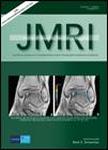版权所有:内蒙古大学图书馆 技术提供:维普资讯• 智图
内蒙古自治区呼和浩特市赛罕区大学西街235号 邮编: 010021

作者机构:Univ Tehran Med Sci Sch Med Tehran Iran Islamic Azad Univ Student Res Comm Mashhad Branch Mashhad Iran Univ Tehran Med Sci Quantitat MR Imaging & Spect Grp QMISG Tehran Iran Univ Tehran Med Sci Dept Med Phys & Biomed Engn Tehran Iran Univ Tehran Med Sci Adv Diagnost & Intervent Radiol Res Ctr Tehran Iran
出 版 物:《JOURNAL OF MAGNETIC RESONANCE IMAGING》 (J. Magn. Reson. Imaging)
年 卷 期:2025年第61卷第6期
页 面:2376-2390页
核心收录:
学科分类:1001[医学-基础医学(可授医学、理学学位)] 1009[医学-特种医学] 10[医学]
主 题:breast cancer artificial intelligence lesion segmentation magnetic resonance imaging (MRI) computer-aided detection
摘 要:Breast cancer continues to be a major health concern, and early detection is vital for enhancing survival rates. Magnetic resonance imaging (MRI) is a key tool due to its substantial sensitivity for invasive breast cancers. Computer-aided detection (CADe) systems enhance the effectiveness of MRI by identifying potential lesions, aiding radiologists in focusing on areas of interest, extracting quantitative features, and integrating with computer-aided diagnosis (CADx) pipelines. This review aims to provide a comprehensive overview of the current state of CADe systems in breast MRI, focusing on the technical details of pipelines and segmentation models including classical intensity-based methods, supervised and unsupervised machine learning (ML) approaches, and the latest deep learning (DL) architectures. It highlights recent advancements from traditional algorithms to sophisticated DL models such as U-Nets, emphasizing CADe implementation of multi-parametric MRI acquisitions. Despite these advancements, CADe systems face challenges like variable false-positive and negative rates, complexity in interpreting extensive imaging data, variability in system performance, and lack of large-scale studies and multicentric models, limiting the generalizability and suitability for clinical implementation. Technical issues, including image artefacts and the need for reproducible and explainable detection algorithms, remain significant hurdles. Future directions emphasize developing more robust and generalizable algorithms, integrating explainable AI to improve transparency and trust among clinicians, developing multi-purpose AI systems, and incorporating large language models to enhance diagnostic reporting and patient management. Additionally, efforts to standardize and streamline MRI protocols aim to increase accessibility and reduce costs, optimizing the use of CADe systems in clinical *** of EvidenceNATechnical EfficacyStage 2